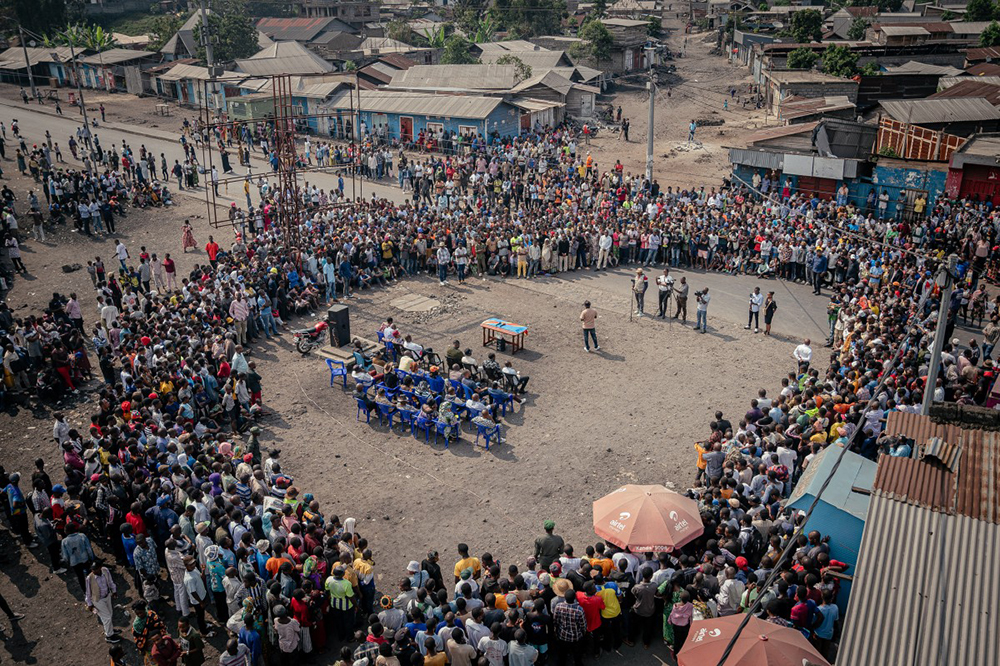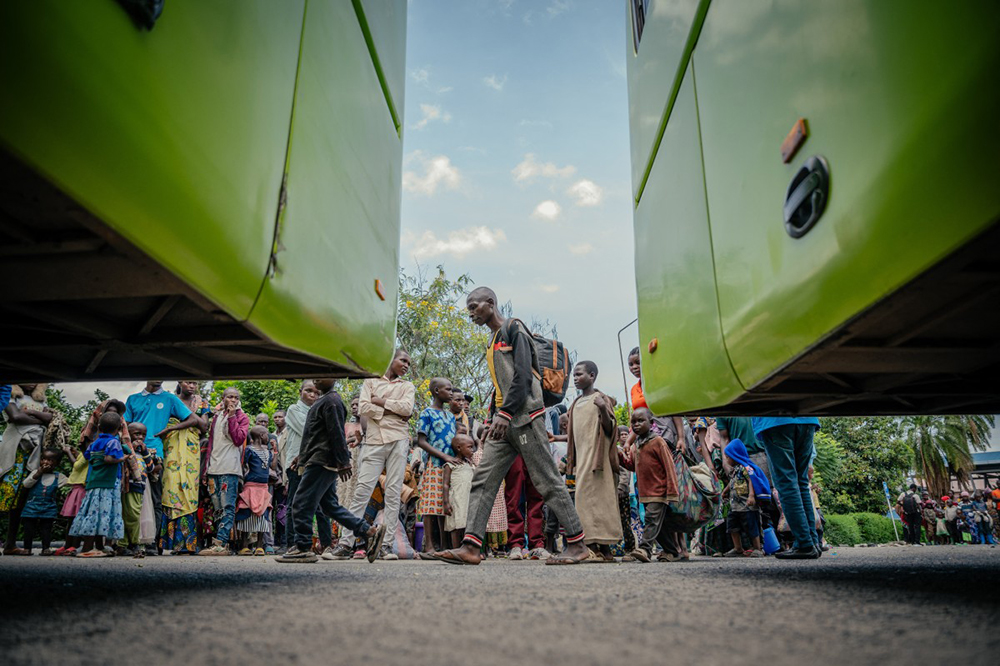DR Congo accord with M23: fragile step towards peace
Signed on July 19 in Doha, Qatar, the agreement saw the sides commit to a "permanent ceasefire" and "dialogue and negotiation" to facilitate the "voluntary" return of refugees and displaced persons.
Peace mediator Sumbu Sita Mambu, a high representative of the head of state in the Democratic Republic of Congo (L), and Rwanda-backed armed group M23 executive secretary Benjamin Mbonimpa (R) shake hands after signing a ceasefire deal in the Qatari capital Doha. (Photo by Karim JAAFAR / AFP)
___________________
A recent ceasefire agreed between the Democratic Republic of Congo and Rwanda-backed M23 rebels, set to take effect this week, ranks as a tentative step towards peace in the country's conflict-wracked east.
Signed on July 19 in Doha, Qatar, the agreement saw the sides commit to a "permanent ceasefire" and "dialogue and negotiation" to facilitate the "voluntary" return of refugees and displaced persons.
But analysts cautioned the peace process in the mineral-rich region remains fragile and lacks sufficient international support.
This aerial view shows the gathering site of the AFC/M23 meeting in Goma on July 24, 2025. The gathering is part of an outreach strategy aimed at building trust with the local population. (Photo by Jospin Mwisha / AFP)
Thousands of people have died in fighting over the key towns of Goma and Bukavu, with many thousands displaced and facing a serious humanitarian crisis.
Why now?
Eastern DRC, rich in resources and bordering Rwanda, has been riven by conflict for more than 30 years.
The crisis intensified with the 2021 resurgence of the M23 group and came to a head in January and February as the group seized Goma and Bukavu, setting up parallel administrations in each.
Kinshasa had previously opposed direct dialogue with the M23. Diplomatic attempts to resolve the crisis, including mediation by Angola, failed.
However, the surprise intervention of Qatar succeeded in bringing together Presidents Felix Tshisekedi of the DRC and Paul Kagame of Rwanda in Doha in mid-March.
The pair committed to an immediate and unconditional ceasefire, and "that's when things really got moving", said a Rwandan diplomatic source.
"This paved the way for negotiations at the technical level with a bilateral track between the DRC and Rwanda, and on the other side an internal track between the DRC and the M23," the source said.
"Then the United States entered the fray and more or less took over the bilateral aspect."
What is the US role?
Seeking foreign support against M23's rapid advances, Tshisekedi in early March discussed a mining agreement with the United States.
On June 28, the foreign ministers of the DRC and Rwanda signed a "peace agreement" in Washington.
On July 17, the DRC government signed an agreement with US group Kobold Metals, which committed to investing in the digitisation of geological data and the development of a lithium mine in southeast DRC.

Displaced persons, presumed to be Rwandan nationals, board large buses after undergoing identity checks at the border, between the Democratic Republic of Congo and Rwanda, in Goma on May 19, 2025. (Photo by Jospin Mwisha / AFP)
The Congolese president then resolved to hold direct talks with M23, having previously refused to do so, leading to the Doha agreement.
What has happened since?
The Doha agreement calls for a roadmap for the "full restoration of authority" of the DRC government in the east of the country once a peace agreement is signed.
But a dispute soon arose when DRC government spokesman Patrick Muyaya spoke of an "immediate withdrawal" of the M23, which has a political arm, the Congo River Alliance (AFC).
"Nowhere has it been mentioned that the AFC/M23 must leave liberated areas," its spokesman, Lawrence Kanyuka, told AFP.
This verbal escalation "shows that there is the will on both sides to fight", said Fred Bauma, executive director at the Congolese Ebuteli Institute.
Without outside pressure -- particularly from the United States and Qatar, and to a lesser extent the European Union -- it will be difficult to end the conflict solely through dialogue, said Bauma.
Reports by UN experts say Rwanda has sent troops to the DRC to support the M23 and has also provided the group with weapons and technology.
Kigali has always rejected those accusations, saying it is simply engaged in "defensive measures" against a Hutu armed group in eastern DRC, the Democratic Forces for the Liberation of Rwanda (FDLR) -- an armed group founded by former Hutu leaders of the 1994 Rwandan genocide of the Tutsi ethnic group.
The agreement has not yet put an end to the violence. Last Thursday saw at least 11 people killed in fighting between M23 and pro-Kinshasa groups, according to local sources. Both sides blamed the other.
Can objectives, deadlines be met?
Kinshasa and the M23 gave themselves until July 29 to implement the declaration with the deal setting an August 8 deadline for formal negotiations on a comprehensive peace accord, to be signed by August 17.
But analysts see these deadlines as short and it will be tough to meet them in the absence of "sufficiently strong American diplomatic pressure", says Congolese political analyst Christian Moleka.
He says it could take "six to eight months, or even a year to see the M23 withdraw" completely from areas which it controls.